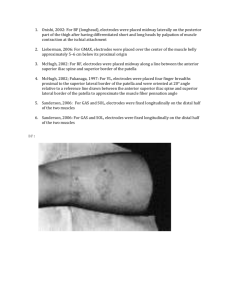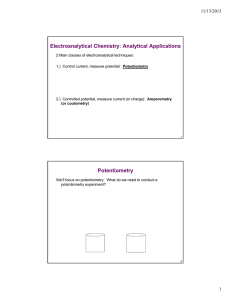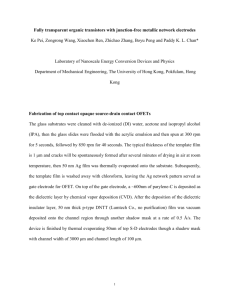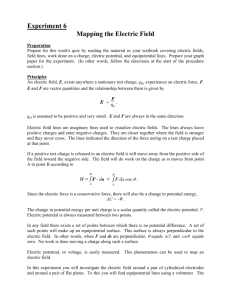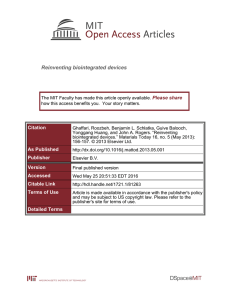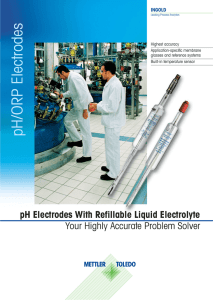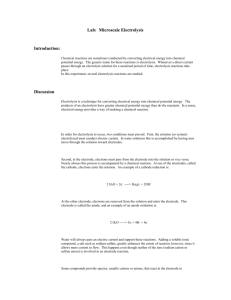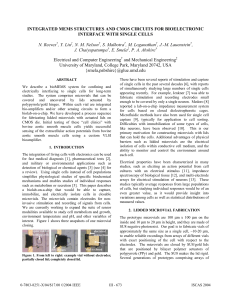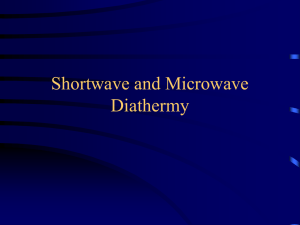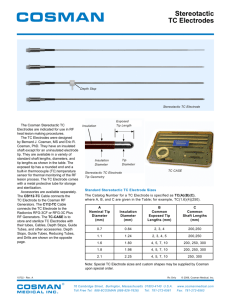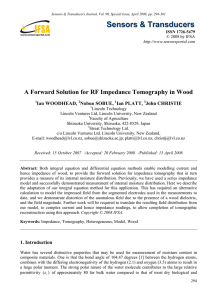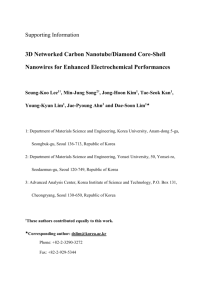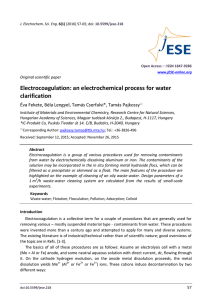Chemical bath deposited CdSe nano
advertisement
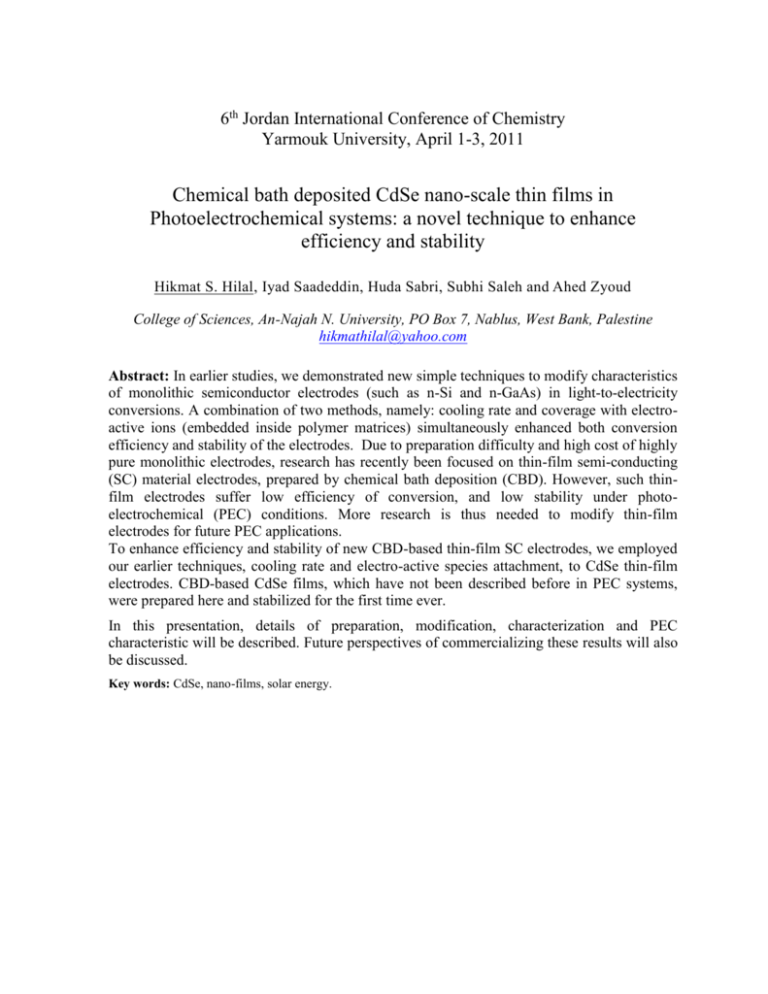
6th Jordan International Conference of Chemistry Yarmouk University, April 1-3, 2011 Chemical bath deposited CdSe nano-scale thin films in Photoelectrochemical systems: a novel technique to enhance efficiency and stability Hikmat S. Hilal, Iyad Saadeddin, Huda Sabri, Subhi Saleh and Ahed Zyoud College of Sciences, An-Najah N. University, PO Box 7, Nablus, West Bank, Palestine hikmathilal@yahoo.com Abstract: In earlier studies, we demonstrated new simple techniques to modify characteristics of monolithic semiconductor electrodes (such as n-Si and n-GaAs) in light-to-electricity conversions. A combination of two methods, namely: cooling rate and coverage with electroactive ions (embedded inside polymer matrices) simultaneously enhanced both conversion efficiency and stability of the electrodes. Due to preparation difficulty and high cost of highly pure monolithic electrodes, research has recently been focused on thin-film semi-conducting (SC) material electrodes, prepared by chemical bath deposition (CBD). However, such thinfilm electrodes suffer low efficiency of conversion, and low stability under photoelectrochemical (PEC) conditions. More research is thus needed to modify thin-film electrodes for future PEC applications. To enhance efficiency and stability of new CBD-based thin-film SC electrodes, we employed our earlier techniques, cooling rate and electro-active species attachment, to CdSe thin-film electrodes. CBD-based CdSe films, which have not been described before in PEC systems, were prepared here and stabilized for the first time ever. In this presentation, details of preparation, modification, characterization and PEC characteristic will be described. Future perspectives of commercializing these results will also be discussed. Key words: CdSe, nano-films, solar energy.

